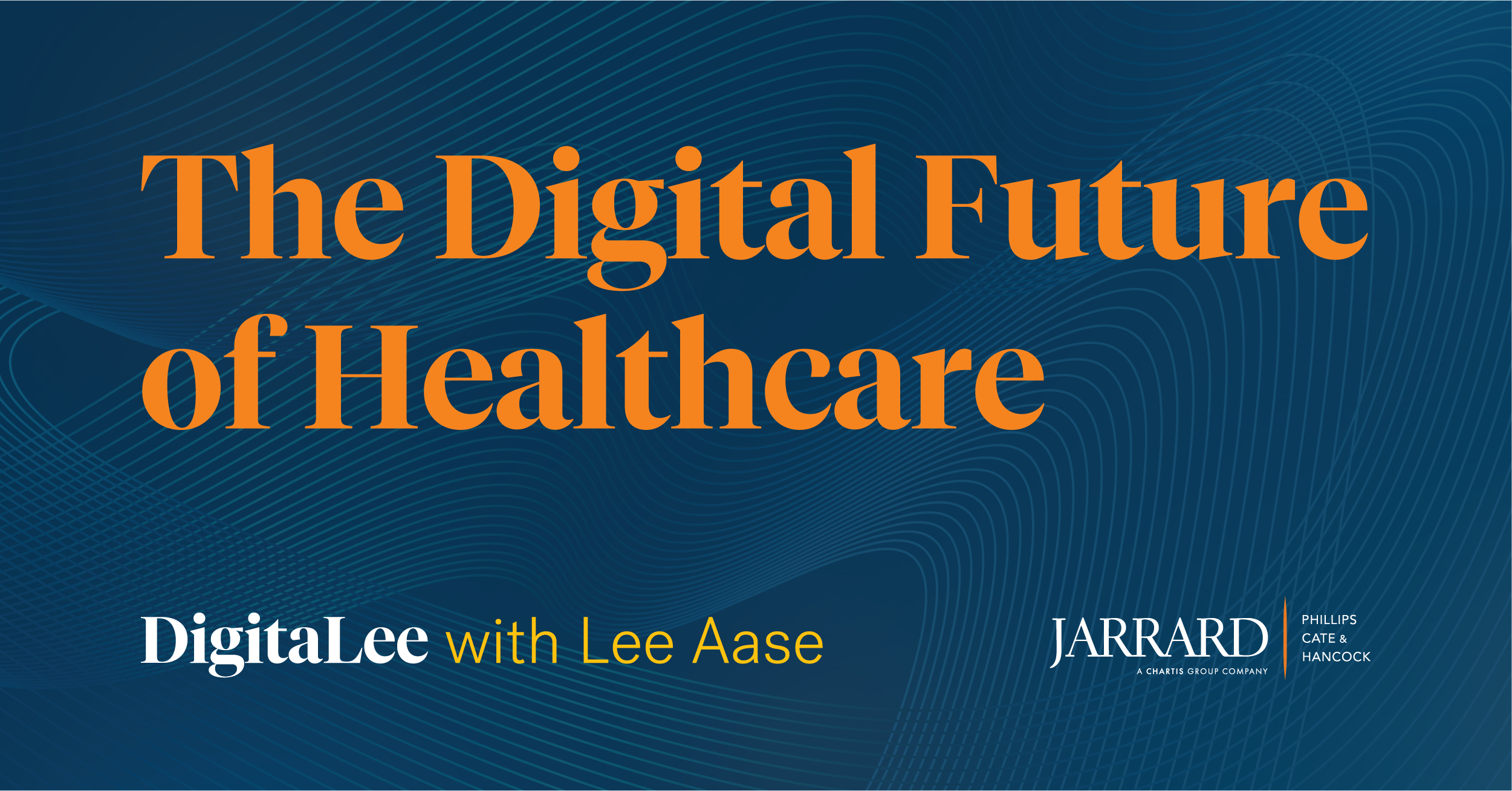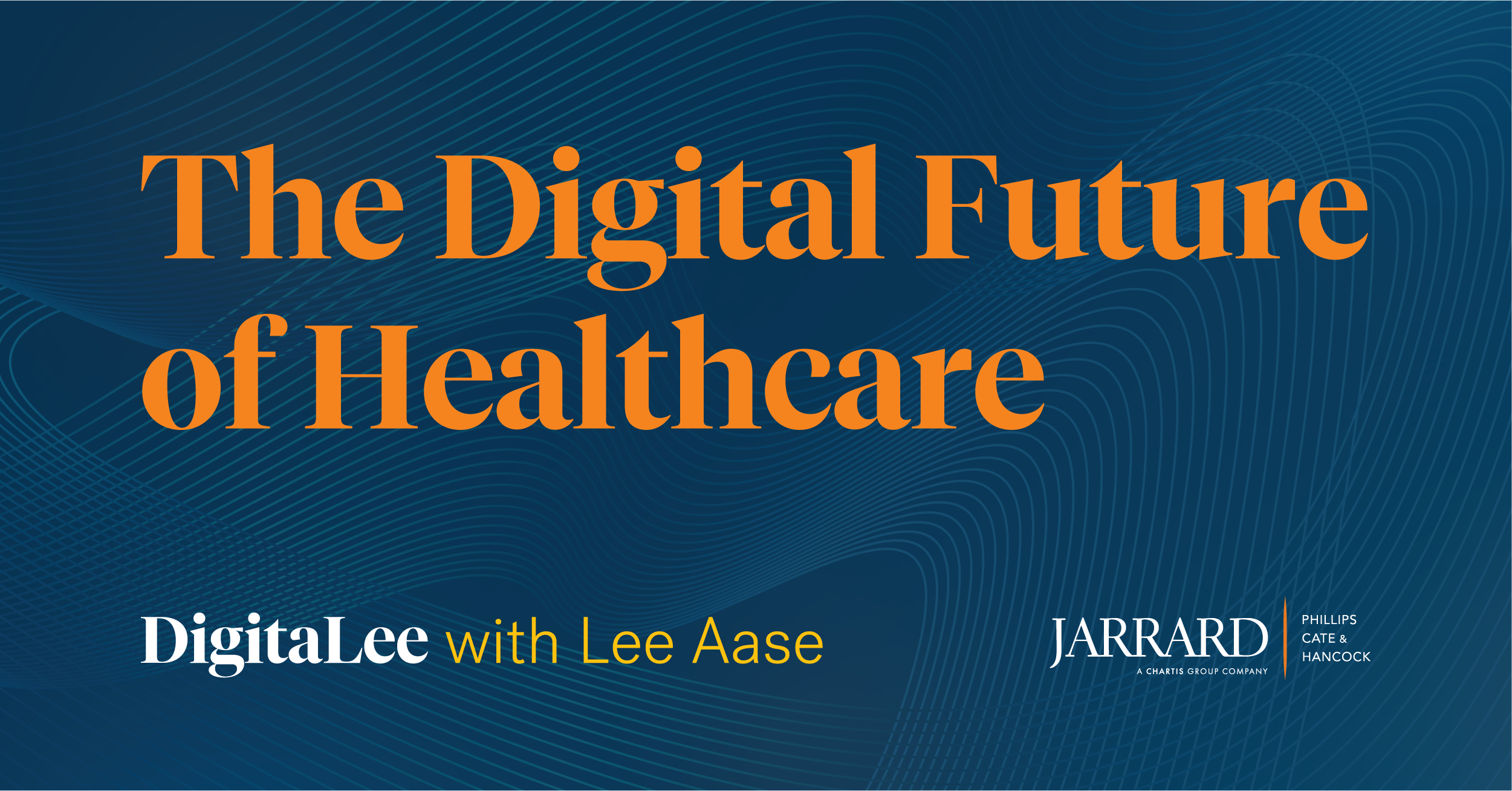
Buy your umbrella when the sun is shining, and more advice on preparing for your next payer negotiation.
Buy your umbrella when the sun is shining, and more advice on preparing for your next payer negotiation.
In-person events continue to bring energy back to the healthcare conference circuit. Last week, a group from Jarrard attended the American Health Law Association 2022 annual meeting. We joined more than 800 other attendees, mostly healthcare attorneys representing both law firms and in-house council for provider organizations. The rooftop receptions and perfect weather were a great follow-on to the Miami conference we attended in May and made for an excellent backdrop to discuss the challenging topics of mergers, partnerships and crises.
Here are a few key themes we heard while reconnecting with friends:
 Lots of activity…but are the buyers there?
Lots of activity…but are the buyers there? Generally, healthcare deal attorneys indicated that they’re busy. There are a number of deals progressing towards milestones in both the acute and non-acute side of things. Financial pressure is expected to drive activity in the acute care space over the coming quarters. CARES funds have run out. Bond covenants loom on the horizon… The expectation is that more hospitals and health systems who are financially challenged or distressed will be looking for partners. On the private equity side, there’s still quite a bit of dry powder – though if, when and how it’s deployed remains to be seen.
Looking more closely at activity among hospitals and health systems, sellers need buyers and there’s a question whether all of those seeking a partner or buyer will be able to find one. Potential hang-ups include the fact that financing gets more expensive by the day and that the FTC, DOJ and state AGs are training their powerful microscopes on consolidation – we’ve already seen several deals called off in recent months.
Marriages weren’t the only thing that had attendees’ attention. Breakups, too, were a topic of conversation. Observers in the M&A world say organizations are evaluating their current partners to figure out whether they’re still the right relationships. And, whether there are more attractive prospects out there that would be a better fit for the organization going forward. It wouldn’t be a huge surprise to see an uptick in the number of partnerships that unwind.
A parallel topic among AHLA attendees involved the fit between organizations coming together in out-of-market mergers, a few of which are sprinkled through the list of recent deals. Cultural fit, in particular, was top of mind. Organizations looking to partner across markets need to ensure a thoughtful integration process – an imperative that holds true in both the acute and non-acute space.
Health equity was very much a topic of conversation, particularly at the plenary sessions. Erin Richardson, chief of staff in the Office of the CMS Administrator, emphasized the “Biden-Harris administration’s focus on equity” during her keynote address. Our takeaway? Anyone considering a deal must have a message and plan for how a potential partnership will impact health equity.
With the meeting taking place days after the Supreme Court’s decision to overturn Roe v. Wade, there was an undercurrent running through the conference about possible effects of the decision. Questions centered on what the ruling will do for employee recruitment, particularly for younger workers. Will healthcare workers want to move to states with restrictive abortion laws? Will college, nursing, medical or graduate students want to attend school in one of those states? Speaking of health equity, how might this set us back? And, for companies considering employee benefits allowances that cover travel for services not available in certain states, will the laws even allow it? The potential ripple effects are extensive and inchoate.
All told, throughout the conference lingered a feeling also evident during the AHLA Transactions Conference back in May. For the first time, given the competing market forces converging on healthcare, the outlook for the next few quarters is remarkably uncertain.
The AHLA takeaways gibe neatly with what we’ve been hearing from our clients whom we’re advising on communications and political strategy for a range of partnership projects. With seemingly more sell-side projects in the offing, will the buyers be there to get deals done in an ever-complex and challenging environment? Our advice: Sellers need to explain what they have to offer potential buyers. And, of course, continue to expect a lot of scrutiny for any proposed deal.
Above all, get out first and control your narrative.
This week on DigitaLee, David Shifrin and Lee Aase talk about digital security in two forms. First, the general trend of hackers and scam artists constantly finding new ways to snag your info…and money. These days it’s a cryptocurrency scam on LinkedIn costing people tens of thousands of dollars. The second thing is the recent news that many hospitals have tracking pixels placed not just on their websites but on their patient portals. That’s bad news and a bad look when it comes to healthcare marketing and, most importantly, patient privacy.
Listen and subscribe to the podcast, or read the transcript below.
David Shifrin: All right. So a brand new topic today, Lee, something that nobody has ever talked about before, ever. We were digging under rocks and found this. No, it’s not true. I wish it was true, but it’s not. Conversation today about cybersecurity and protecting our own personal information, and this really started with an article that we found – I think it’s from CNBC – talking about a LinkedIn scam where people are creating fake profiles and then pulling people into cryptocurrency scams while they pose as financial advisors and bilking people out of a lot of money.
So that kind of raised the issue of you always have to be wary about what you’re dealing with online, and then led into sort of a wider conversation about just personal information online in general, which brought up this other new problem that has been revealed recently, where tracking pixels have been placed on not just hospital websites, but in some cases on patient portals. And that is allowing for the transfer, the sale of private health information and other personal information from patients to be sold.
Lee Aase: Yeah. the LinkedIn article – the article about using fraud on LinkedIn, people setting up fake accounts and enticing others into investing in cryptocurrency – and then the story the one person featured was that that they had been directed into Crypto.com, a reputable site, and then building that relationship and then over time having it being migrated or being encouraged to migrate into another site owned by the other, by the bad guy. So I think it’s just good for us to know that people who are wanting to do us ill are restless. Restless. They do not rest and they’re very eager to exploit opportunities.
I see it all the time with text messages that I get saying “an AT&T message: your bill has been paid and please accept your gift” with a link to click, there’s all sorts of just shady things like that are happening. And just I guess eternal vigilance is the price of liberty, as the old saying goes, or the price of yeah, economic liberty. Because the person in this particular case had lost $280,000, had been swindled out of that. And I guess what we’re seeing with these digital platforms is just a lot more opportunity for people to have a broader, for the bad guys to have a broader range, broader scope in terms of an audience that they can try to exploit.
DS: What’s interesting about that article too, I thought, was that it highlighted that LinkedIn is a good place to scam people because people look at LinkedIn as a relatively safe professional place to go. And I think your point is exactly right. They just have to be wary and can’t, frankly, can’t trust anything.
LA: Yeah. They also post that they work at a given institution or for a given company. And there isn’t any verification of that. That’s they’re alleging that. And I’ve had that back before, in my days working with Mayo Clinic, somebody would say they were a Mayo Clinic employee, and they were reaching out to me, and I’d look them up in the directory, in our online directory, employee directory to say, so is this even really a…I don’t recognize this person, is this a Mayo person? But it’s so easy to just say, oh this is somebody who works with me. Yeah, I’ll accept them, whatever.
DS: And then I don’t know if you want to talk about this here, Lee, but you had mentioned too that you had a recent experience with some bots and spammers that fits in with this.
LA: Yeah, it was just crazy. It was right along these lines. And speaking of AT&T, I got a call from AT&T that someone was trying to purchase a phone using my phone number and they had, they were calling to confirm that it wasn’t me, or to check that it wasn’t me. And I said, no, that’s not me.
And when I hung up, I opened my email and I had about 200 different email list subscription things that were coming in saying thank you for signing up for the Indiana Department of Labor list and for the US Agency for Economic Development. And so I did a Google search and said, so why am I getting all these emails for subscription lists?
And I guess this is a scam that’s happening now, where people do some kind of a hard, they were trying to get a free phone, and what they’ll do then is use your email address to subscribe to email newsletters that don’t have a captcha on them, you know, prove-that-you’re-human kind of thing, so then the idea is that when that, AT&T notification comes that it’s swamped by all these other emails that you’re getting as well, and you end up deleting it and not recognizing that it’s happening.
They’ve harvested the lists of all these places where they can push one button and put in your email address and subscribe you to all of them through a bot, and then it’s just a matter of creating chaff, creating counter measures that prevent you from seeing what’s going on. So yeah, that’s just one new wrinkle about the relentlessness and restlessness of the bad guys in terms of figuring out new ways to cover their tracks.
DS: Lee, let’s flip this then from sort of our responsibility – it’s always our responsibility to be vigilant – but to think about this in terms of what we actually give permission for and our expectations around privacy. Our information, as everybody knows, is out there everywhere; we sign up for Facebook, we sign up for Twitter, we sign up for anything, and with cookies we’ve just signed our whole lives away. And yet at the same time, there’s still an expectation, right, that certain elements of our life should be private, particularly when it comes to health.
And so that is a concern now with these, the exposure of tracking pixels being placed on provider websites and on patient portals. So talk a little bit about how social media is collecting information, how these pixels work and why it is possible.
LA: Yeah. When a pixel gets placed on a website and whether in this case that we’re talking about here, you’re talking about patient portals, I think that’s just amazing to me that someone would think that was an okay thing to do. It’s one thing when it’s a regular hospital website, when you’re into the patient portal, then you’re looking and you do events that trigger capture of information.
And they were talking about that; the name of the patient, the time of the appointment and the doctor…so if it’s a specialist in gynecology or in other, whatever specialist, whatever specialty it is, it can be pretty revealing of what kind of interest or condition that the patient might have.
I think hospitals and health providers that are dealing with pixels at all on their sites are really setting themselves up for pretty a big privacy concern blowback, that there will be some episodes like this that will come in the future where information gets disclosed, that somebody will raise a major issue and people and organizations that are using these within their sites are going to be not in a good spot. They’re going to have reputational risk. And I just don’t think…they have reputational risk now, they will suffer reputational damage and there will be concern about it that’ll be hard to erase.
So I would really recommend that hospitals and other providers be super reluctant to engage in that and maybe be very careful. And I don’t know, there was the old Ronald Reagan saying “trust but verify”, but I don’t know, you know, I don’t think you should trust. I think it’s just, it’s playing with fire to be messing with that.
DS: So it does put a little bit of a crimp on marketing plans, because if you just say, look, we’re not going to mess with this at all, we’re not going to mess with pixels, then that does – and talking on the main website, not talking about patient portals, that should just be a given – but if you say we’re not going to even go near the fire much less play with it, then yeah.
That could have potential implications for how you’re doing retargeting, how you’re setting up your advertising campaigns. But I think that the challenge then is, or the call then is just to find other ways to reach people, use other tools. But don’t put yourself in a situation where you’re unwittingly violating all kinds of patient confidentiality.
LA: If you’re the gateway for information getting out about your patients, and even your prospective patients, getting shared with others and sold to others, that’s just not…marketing is something that’s done in healthcare, obviously needs to be done, but that needs to be put in and it needs to be in a very circumscribed place so it’s not doing harm to the people that we’re trying to serve.
DS: So then Lee, for the tip, I think that kind of is it, but more specifically, what are a couple of things digital teams should, after listening to this, should go and check, or that an executive should ask their team to make sure everything’s okay?
LA: Yeah, they should just be definitely finding out what the organization is doing and has done with pixel placement and use of these, and if they’re going to go into it, going with eyes wide open and really understanding in what limited respect they might consider using something like this, but it is playing with fire and likely to get burned.
DS: Okay. And then the other piece of this, again flipping it back towards the patient then, is so often we’ll get emails from different service providers saying whatever, “Xfinity will never call you requesting your password or your social security number,” something like that. And I think that ends up in the material that we get from hospitals or doctors’ offices in that sheaf of papers that we always have to sign in the privacy practices. But I think it’s also important just to, it’s one more responsibility on the providers, but to take the time to explain to your patients how you collect information, how you ask for information, what you’re doing, and to really give them the resources that they need to protect themselves and their personal health information.
LA: And in a way it’s like the survey fatigue that we all have because you get this “American Express wants to know what your experience was like with your most recent person” or Delta airlines or whoever. And with all these disclosures of privacy practices as the consumer, it is bewildering.
It’s just, it’s a snowball. And so finding ways to, as healthcare providers, to be clear about that and eliminate the jargon and try to be plain English communication. But mainly don’t do bad things. Use the mom test: what would you want happening with your mom’s information? And golden rule: doing unto others is you’d have them do unto you, that if you wouldn’t want your information used in that way, you probably ought to not be doing it. Especially given that many of our, many if not most, of our healthcare providers are nonprofits, so you’re supposed to have a charitable public service orientation. I think that weighs very heavily on the level of caution that you should be exercising when engaging in any of this kind of stuff.
Great business and operational skills are no longer enough for C-suite leaders. Good people skills are increasingly in demand.
Want to be notified as soon as we publish new content like this? Subscribe here.
Today, the United States Supreme Court struck down Roe v. Wade.
The ruling is “one of the most consequential in modern memory.”
Across the country, healthcare providers are deeply involved in the private and very public conversations happening in light of the seismic decision.
The questions we’ve been asking since the leak have been answered. This is a moment of divisive and profound emotion. Celebration and relief on one side. Fear and anger on the other. Exhaustion by all as our country is further unsettled.
Hopefully, you’ve done the homework recommended several weeks ago. Either way, here’s immediate guidance.
Speak. To whom and how depends on your community, your culture and position. But the people important to you – your colleagues, nurses, allied physicians and, likely, your community – want to know how today’s decision affects them; how, as an organization, you’re thinking about it and acting on it; and what the longer-term consequences might be.
There are (too) many hot button cultural issues today, some of which healthcare leaders may have strong opinions on but little standing. Weighing in on the war in Ukraine is a local decision.
The redefining of women’s health services, however, is squarely in your lane. It is where your voice is uniquely trusted, needed, expected. Again, whether to have a message on this issue is not optional. Not addressing it – the choice of silence – is a powerful message, too. Choose words.
Here’s where to start:
This is a hard moment. We know it demands the very best of each of us as we move through this fractious time, and as you take on this challenge for your organization. Mission, culture, zip code and politics all play a role in how you respond. Why so hard? Because it raises the questions, “Who are we as an organization?” and, “Who do we choose to be?”
We also know this is the latest in a relentless accumulation of hard moments. As you rise to the occasion – again – take care of yourself and your team. And know that we’re in it with you.
Photo by Claire Anderson on Unsplash
Healthcare and society are now two years into a period of renewed focus on improving diversity, equity and inclusion for both those employed within healthcare and those served by it. The hope, after devastating inequity and bias were brought to light through the pandemic and George Floyd’s murder, is that this “period” will in fact be permanent. It’s well past time to finally solve the lack of diversity within the upper echelons of healthcare and the gaping chasms in access and health equity between white and Black (as well as brown) populations.
So, then, what progress been made in the past two years? Is momentum being maintained towards bringing more Black voices and experience into healthcare, not just in word but also in deed through investment of FTEs and financial resources?
With the second federally-recognized Juneteenth holiday just passed on Sunday, the Jarrard Inc. DEI team, which operates under the Kaleidoscope name, wanted to get a sense of what’s happening across healthcare.
To do that, we sent questions out to some of our expert friends from across the industry whose work centers on DEI in healthcare – and beyond.
Every contributor reminded us that representation matters – it’s table stakes. And several pointed out the importance of organizations and leaders meeting people where they are by developing initiatives that fit with how those affected already live. That, rather than trying to pull people in and putting the burden on them.
Here are six themes from our conversations. Full quotes from the interviewees can be found below.
Things have gotten very loud and covered in emojis. Maybe we should reconsider – in both our professional and personal lives.
Ford CEO Jim Farley is creating a real-time case study for legacy brands – like century-old hospitals – on how to disrupt themselves.
This week, former head of social and digital at Mayo Clinic Lee Aase and Jarrard’s David Shifrin talk about recent mass shootings, including those in medical facilities in Dayton and at St. Francis in Tulsa. We’re horrified by what’s happening, and there’s so much to deal with here, but because this podcast is focused on helping healthcare marketing teams in their roles as the voice of the organization, we talk about some things that digital marketing and communications pros can do to help guide messages around the issue of gun violence. And, maybe reduce some of the criticism that often follows any kind of difficult situation.
Listen and subscribe to the podcast, or read the transcript below.
David Shifrin: So Lee, good to see you again. Last couple of weeks have been a challenging time in society and healthcare. So many national headlines across the past couple of weeks and the numerous headlines around gun violence. We were looking at this issue with the mass shootings and Buffalo and in Texas.
And then just as we’re sort of trying to process that, then we see gun violence come to healthcare facilities in Dayton and Tulsa. We see healthcare providers in the middle of this issue and in this conversation for multiple reasons, and so in all of that, marketing and communications and digital teams are having to craft messages around challenging issues. And in this case today, specifically around gun violence, and do that in a way that is meaningful and addresses the issue in a meaningful way.
So I wanted to spend some time with you thinking about how we can support marcomm digital folks at healthcare providers, and just give them some things to focus on very practically as they are dealing with all of this input and trying to craft messages that are productive for the community.
Lee Aase: I would just say, first of all, it’s just a gut-wrenching time when you’re faced with all this stuff, and when we’re seeing just the devastation that comes from this stuff, and people immediately want to say “We got to do something. Okay, we gotta have a response,” and that’s totally understandable.
It’s commendable, that people would say “we want to do something about this,” but it’s like, what’s the thing that you do? And these are the kinds of issues on which reasonable people disagree. They have different solutions, and nobody wants to see schools get shot up or healthcare facilities get shot up.
And so how do you deal with the environment that we have? How do you deal with the constitutional issues that we have? As well as then some of the things like the mental health crisis, which is obviously behind a bunch of this, when you see especially in some of these mass shooting events.
And we were talking a little earlier about how for children that gun violence is, like, just inching up as the number one cause of death now. And that’s not just mass shootings, but it’s the day-to-day kind of mayhem that’s happening. And so it is, it does put us in a tough position to try to…because the desire that people will have is to have some kind of response. And then they say our thoughts and prayers are with them, and people are like, thoughts and prayers don’t do anything! And then you get into, yeah, we’ve all lived that. We’ve all lived that.
DS: It devolves so quickly.
LA: Yeah. And so I think from my perspective, the thing is as marketing communications, people working on behalf of organizations, our job is to help the leaders accomplish what they’re trying to accomplish, and what is the goal that they have by doing this thing? And thinking through what the implications are and how they might say this and, you know, put together messages that aren’t accusing everybody else who’s on the other side of, who has a different opinion or bad faith, and to try to create an environment of respect. And I realize I’m saying this in the context of online discussions, how’s that going to happen?
But starting within the organization, probably, that’s where there is more decorum perhaps, starting the conversations internally, close to home and talking about as organizations, what concrete positive steps we might take.
And some of it might be around mental health and that they’re really addressing some of that, but it’s a vexing time and it’s really a time when, for people who are in that, in the public eye and kind of feeling like there’s a need to take a public stand, it does make it complicated to try to say, so if we take that stand, what are going to be gaming it out? What are the follow-ups that are going to come out of that? And what are we prepared to do that would make a difference?
DS: Yeah, I think that’s such a good point because putting a statement out about gun violence, it has to go beyond saying we’re against gun violence. That’s basic, that’s a default position, right? Nobody is for gun violence. So then what, where do you go from there?
LA: And then I guess the other thing to think about with that is that okay, when we’re making this statement, what action are we prepared to back it up with from our organization? How are we going to constructively contribute toward this, other than saying these guys should do this or these guys should do that.
It’s like what, if leadership means leading, means doing something that is helping to solve the problem versus pointing fingers at other people and saying that the problem’s with them. But for a healthcare organization if you really are seeing it as a public health crisis or public health emergency, public health issue at least, then what can the healthcare organizations uniquely contribute to it that other organizations can’t?
DS: So yeah, I think it makes a lot of sense. And so for marketing and comms folks, it’s helping to guide those conversations. You’re saying supporting leadership in kind of helping to push leadership towards those specific actions and commitments.
And so making sure that the words and the actions match up, and I think there is a unique responsibility and opportunity for marcomm folks to be able to do that; to look at what is being said and then say are we, how are we going through this? And working with operations and clinical and finance to say let’s get everything lined up so that when we say “here’s our statement,” we can also then come in and say “here are the things that we’re doing next.”
LA: Yeah. And we’re prepared to deliver and we’re going to execute on it and yeah. And to do it in a way that doesn’t inflame the situation more, as I said assumes good intentions on behalf of the people that are engaged in the conversation so that it doesn’t devolve, as you said.
DS: Let’s look a little more specifically now at an individual incident.
What about on sort of the backend of a situation that’s going to inevitably, unfortunately, lead to people criticizing your response?
It’s just, it’s what happens. People want something different than what they get by default. And so is there anything that folks should think about saying or not saying in response to potential criticism about what they said, how they handled it, et cetera, et cetera?
LA: I think just humanizing the people who are involved in the response, just emphasizing that we’re all torn up by what’s happening here and we’re doing the best we can in the moment to be able to give people the information that they need and deserve and want, while also protecting the privacy of the, we’ve got HIPAA, we’ve got all these other issues that we need to deal with as well.
And I think the big problem we’re seeing in society in general is just a lack of empathy. A lack of being able to see from the perspective of those involved. And so by humanizing, even this might be a place where the people who are involved in telling the story, maybe even featuring them in some of this, telling that story of what it’s like to be dealing with a situation like this. Because especially on a, if you’ve got a social platform where they see the organization’s icon is the response to you and it’s not coming as a real person, then it feels disembodied. It could be an AI bot on the other side that’s responding to you. So creating that more warmth, more personal bonding there, I think is something that yeah, particularly in the aftermath that you might help people understand that nobody signed up for this, this wasn’t part of the…yeah, you signed up for it and you handle things as they come in, but it’s challenging for everybody involved.
DS: I love that advice for just humanizing and bringing the people who are behind those accounts, the admins, putting their names and faces potentially behind it. I think that’s really cool.
Okay, Lee for the last segment this was a question that we got sort of through some of our client-facing folks here at Jarrard and I thought this was actually a little bit tangential, but it’s really, yeah, an interesting, the different types of crisis response.
And I thought we could talk about it here a little bit, you know, call it the question from the community, is when do you activate a response to something that’s been said on social media? And again, kind of goes back to what we’re just talking about when people come after you verbally. Not thinking here about a negative review or, oh, I wish this had been better or the parking was crap, but just somebody who’s really upset, getting a little bit loud, you know? So is there a framework or a rule that should inform when you stay quiet, when you go public, when you respond to people directly? That mini reputational crisis.
LA: It’s a sort of a mini Hippocratic oath for political, for communications, for online: don’t make it worse. So first you just need to make the judgment: is this going to amplify, is our engagement with this going to amplify it and spread it to a broader audience than if we tried to deal with it in another way?
I think always, if there’s an opportunity to reach out and connect with a person to try to take that discussion offline, to try to identify if there’s a way to face to face, human to human, be able to work through it, that’s a win. Or if you’re able to.
There’s sometimes that’s just not going to happen. There’s just a level of animosity built up. That’s where blocking comes in, and on some platforms that’s not available, but you see that happen sometimes on Twitter. I can say I’ve never blocked anybody, I’ve never had to block anybody, but you see sometimes that with muting conversations on Facebook or whatever, that sometimes people have had their say, you haven’t muzzled them, you haven’t stopped them from being able to express themselves. So it’s not de-platforming them, but it’s also saying, you know, if somebody is determined…there was a, I think it was Winston Churchill says a fanatic is someone who can’t change his mind and won’t change the subject, but if you’ve made the judgment that there really isn’t any winning this person over, that at some point you just need to politely agree to disagree and disengage from it. And then where of course there’s, if it’s a patient concern, there’s always the patient privacy HIPAA issue. You don’t have the full ability that the patient has to be talking about the situation because that’s their private information and they can be, they can disclose whatever they want and you’re limited on what you can do.
So that’s where you have to be very cautious in where you’re going to engage. Always trying to deescalate if you can. But at first, just making sure that you don’t add fuel to the fire.
DS: Okay. And so that really does tie in, I’ll retroactively tie it into the second point that we were talking about, where you saying just humanize it, try to make those personal connections and talk about what happened.
LA: Yeah. It’s amazing what people will say by email that they wouldn’t say face to face, and if there’s…and just offering an opportunity to say hey, could we get together and talk about this? And I think that face to face communications is an underappreciated and underutilized tool.
DSh: Alright. Thanks, Lee.
These past couple of weeks have elevated (again), the urgency for action on gun violence both as a public health issue and local crisis.








